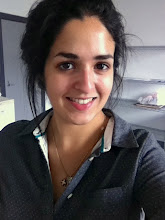I will most probably reflect on my report (and perhaps the readings for this class today) later on tonight or tomorrow, but for now, here are my notes for this class. There was a mix of readings that weren't as evenly or obviously connected as last week's readings, but there was this one particular theme, most prominent, of the media misinterpreting and being impatient with archaeologists and their field work (for example, National Geographic and journalists, in general). There seems to be so much misunderstanding when it comes to understanding what archaeology is...!
These notes were taken on my laptop, so they're longer and more detailed.
“Responsible Archaeology Is Applied Anthropology” – Pyburn and Wilk - Archaeologists need to let local people (near their excavation site) teach them about their interest in the past
- Archaeology must offer something to the people of the land
- Collaboration has problems (between locals and archaeologists):
1) Time scale – things happen slowly in communities
2) Lack of infrastructure – overcoming factionalism and build a consensus
3) Power – power shifts
- Ethical responsibility – only thing that will keep archaeology alive.
+ Need to be applied anthropologists, as well
- Respect for anthropology and archaeology
“Archaeology’s Perilous Pleasures” - Lowenthal - Archaeologys new found importance stems from:
1) unique focus on the remotest epochs of human existence (exotic secrets)
2) concern with tangible remains (credibility)
3) attachment to issues of identity and possession that embroils everyone
- Three realms of discourse: antiquity, tangibility, present day relevance
- ANTIQUITY -
- Ancient remains arouse widespread awe
- With priority comes entitlement (what comes first)
- TANGIBILITY -
- “fieldwork” – unearthing treasures of high value
- convincingly real
- physical decay is painful to us so we are obsessed with conservation
- tangible character makes archaeological evidence gripping, but at the same time, incomplete and deficient
- RELEVANCE -
- relevance to current social and political issues
- archaeologists often exemplify national feelings (especially in newly ex-colonial countries
- archaeologists are not immune to pressures to conform to national, ethnic, and personal agendas
- excavations the pawns of personal ambitions and nationalist goals
- heritage benefits
“Mixed messages: Archaeology and the media” – Finn- Archaeology has become a part of popular TV and articles, make more of any mysterious archaeological data
+ Stories are skewing the subject
- Archaeologist as hero – damaging publics understanding of archaeoligcal work
- Archaeologists hold back information until it makes sense in academic terms
- Site security an issue, journalists always hungry
- Impatience rubs against the pace of archaeological excavation
+ Cut to shots of mummies, but don’t blond the viewer with science
- Impatience rubs against the pace of archaeological excavation
- Archaeologists claim journalists are superficial and their accounts distort the picture, journalists claim archaeologists are mean with information
- Archaeologists questions are asked post-excavation, when all the evidence obtained is considered. Journalists want the information now.
- Journalism teaches archaeology that the process of understanding is dynamic “Archaeology Matters: Action Archaeology in the Modern World” – Sabloff - People see archaeology in terms of entertainment rather than as a discipline that is relevant to life
+ Lack of understanding may be laid at the door of archaelogists themselves
- No reaching out to public
- “unless archaeologists find ways to make their research increasingly relevant to the modern world, the modern world will find itself increasingly capable of getting along without archaeologists”
- Popular writing frowned upon by some academics, then popularization in other media even worse. Therefore, archaeologists don’t use popular media to publicize themselves.
- Not only should archaeologists communicate with the public, they should also demonstrate that archaeological research can help improve our world today and in the future
+ “action archaeology”
- conservative field, change does not come easily
“Public presentations and private concerns: archaeology in the pages of National Geographic” – Gero and Root - how archaeology participates in the formation of the dominant political ideology of America
+ interpreting the past plays an active function in legitimating the present
+ how archeology is exploited + capitalized upon to reinforce the dominant ideology that produced it, in National Geographic
- Nat Geo – Founded in 1888, coincided with transformed world view, dedicated to the advancement and dissemination of specialized geographic knowledge.
+ Publicize nationalist ideology, presents “view of past that promotes technological progress as cultural superiority”
+ Hints to expanding capitalist society – past represented in exquisite objects
- Photography crucial
+ Illustrates archaeology as exploration, drama
- Stresses exploration in remote places, overemphasize discovery of lost civilizations
- Telling of the past hints to our dominant ideology: Eurocentrism, nationalism, racism, materialism, sexism, state-level society
- Industrial capitalism





